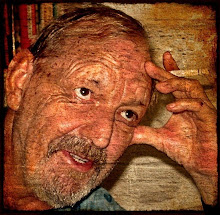Languages are not like good, solid archaeological sites, where you can reasonably expect to dig down, and find successively older layers, with, hopefully, telling remnants of (usually) rubbish that might give you some ideas of how people lived in the past, who they were, and where they came from.
Modern languages are the only observable twiglets of an invisible tree, hiding an immensely complex and quite unseeable history of lost and decayed subterranean roots and undergrowth, where languages have diverged from common ancestors, moved locations, had incestuous relations, indulged in miscegenation, and generally mixed up the results so much that all speculations on what happened in the past, as derived from what we can observe in the present can only be that - speculations.
It's a little different when languages have been recorded in writing in the past. We can speculate with much more assurance if we hold, say, a Latin text and a Modern French text, 2000 years apart, in our hands, and compare them.
Austronesian languages were not written down in the past, so historical linguists have to use a quite different methodology, by tracing out the observable changes in sounds from one branch to another, and reconstructing the family tree from the top down.
Or, as is the case in linguistics, showing the reconstructed tree upside down, like this:

This shows, at the root (top of the diagram) a major split between Formosan (Taiwan) Austronesian languages, and then next, another major split between Western Malayo-Polynesian languages, and all the others.
Western Malayo-Polynesian languages are, roughly, all those spoken West of the Wallace Line, which divides the 'spheres of influence' of the ancient, now drowned, continents of Sundaland, to the West, and Sahul (including New Guinea and Australia), to the East.
This family tree concentrates on the major branch leading to the native languages of the Pacific Ocean islands.
The other major branches, of the languages to the West, are summarised as single lines, which is quite necessary, because no-one has yet worked out the detailed family tree of the Western Malayo-Polynesian languages, which 95% of modern Austronesians actually speak.
Numbers, though, are quite different from other words in a language. They show, not only a set of words with exact, unambiguous and enduring meanings, but they also preserve, as a set, the evolution of the systems used in the past, as people developed from counting fingers and toes to conceiving of numbers as abstract symbols.
You can judge, with some confidence, that a language that has words for only one, two, and many should at least be less-developed than one where the speaker touches his fingers and toes as he names them, and the final stage, where lima is only a fossilised remnant that hands were ever used at all.
Now it happens that the area, comprising Bima, Timor, Flores, other islands of Nusa Tenggara and the Moluccas, the islands and coastal strip of North and East New Guinea, together with the Bismarcks, the Admiralties, the Solomons, Vanuatu and New Caledonia holds a mass of diverse Austronesian languages.
That is the part coloured orange on this map, and the left hand part of the huge yellow area denoting the Oceanic lanuages.
The very same places also have almost all of the more than 200 'aberrant' number systems, so it should be possible to physically map the visible development of the number systems, and indicate, at least in general terms, the actual physical place of origin of those number systems.
Those number systems were surely conceived and developed long after the very first ancestral speakers were around.
So far, I've found it easy to see the overall picture of the development of the primitive number systems, with the most primitive, and the most diverse, centred on the Bismarcks and the adjoining coast of New Guinea. This is precisely the area which, by quite different linguistic analyses, is generally accepted to be the birthplace of Proto-Oceanic, the root language for all of those Melanesian and Polynesian languages East of there.
It's also possible to see a strict breakline between this area, and another, where the 'Proto-Austronesian' abstract, symbolic numbers are used exclusively.
What is very, very difficult to find is where and how the primitive systems developed into the final finished one. I have a sneaking feeling that this development happened somewhere in the purple area of the map, and all traces of it have been 'drowned' by the spread of 'more modern' Western Malayo-Polynesian languages.
What is also very difficult is to judge by just how much Austronesian languages were affected by their contact with an amazing variety of very much older 'Papuan' languages, almost none of which ever developed a full abstract number system.

